The Stereoview in the U.S.
A guide...
by William Jaeger
Art History, University at Albany, New York

The Stereoview in the U.S.
A guide...
by William Jaeger
Art History, University at Albany, New York
An introduction to the vintage American stereoview. The history can be found elsewhere in more detail, for sure, but here are some quick, visual guidelines. The main dates are 1860-1920. Apologies up front for all the generalizations, but to be more detailed would make it more difficult to quarry. This is just a tease. The most collected and for me fascinating period is the core years, 1860-1880, and for a more detailed page on this topic, click here:
By far, most stereoviews are thin paper photographs pasted onto a 3 1/2 by 7 inch card. Like this:
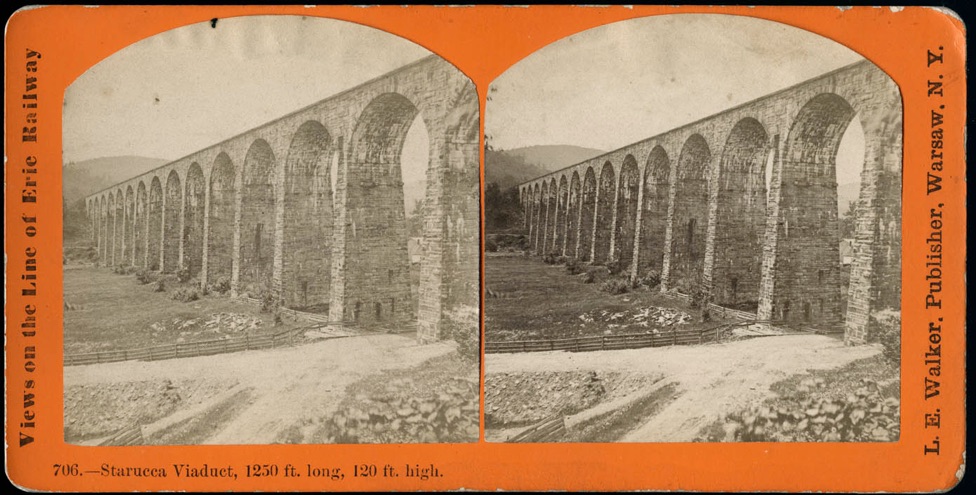
But the earliest American stereoviews were images right on glass, such as this by Langenheim, from the mid 1850s. The Langenheims also made some of the earliest conventional stereoviews (with prints pasted onto cards), but here’s a glass view.

Langenheim, Francis, Grinnell House, 1856 (a wet plate era glass view in standard size)
Some later glass views were made in Europe, but full size glass views were not made in the U.S., as far as I know, after the late 1850s or early 1860s. You have to hold all glass views up to the light (a window will do) and they are pretty amazing in contrast and clarity, though expensive, fragile, and less easily browsed.
At the other extreme in quality and time frame, at the turn of the century, a number of sets came out that were printed lithographically, including one set by Sears & Roebuck and another by Quaker Oats. You get the idea. We’ll avoid these completely, except to show one so you know what this low form looks like.
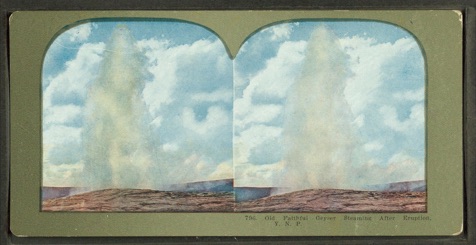
Old Faithful, c. 1900
There also were some tissue cards made that you would hold up to the light and see translucently, sometimes with some pinprick holes for sparkling highlights, other times with a surprise second layer appearing. They were mostly a European phenomenon, and were less about documenting the world than having a bit of fun.
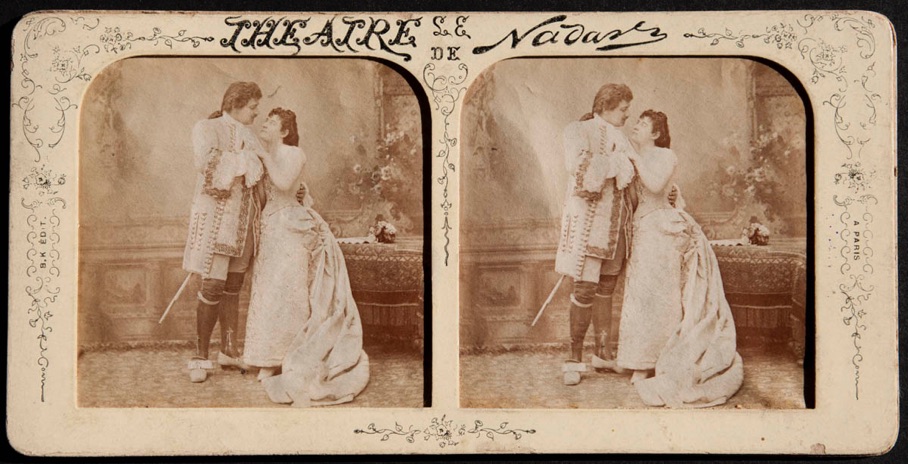
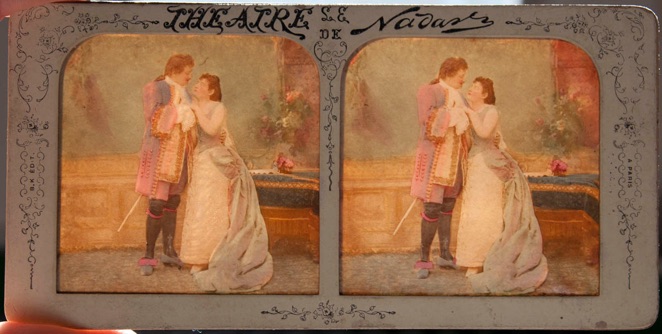
_______________________________________
While Europe can claim a booming stereograph (or stereoview) trade in the 1850s, the craze didn’t take hold here, in the U.S., until the 1860s, and even later in Canada. The visual quality and originality of the best North American views is higher, overall, than European views, which are often matter-of-fact documentations of tourist or historic spots. For a variety of reasons (I’ll elaborate on them someday), American photography took a more idiosyncratic turn, with some fabulous (and varied) results.
In the U.S.: Among the normal cardboard based cards with images pasted on we can come up with a few basic guidelines as to dates and materials. And two broad eras: 1860-1880s, and 1890-1920s.
1860-1880s (diminishing quickly through the 1880s): mostly wet plate negatives (the 1880s images are dry plate) printed almost exclusively on albumen paper. While some production continued through the end of the century, nearly all of the smaller makers stopped altogether by the 1880s as fashions changed. Some larger producers who stayed in business (like Kilburn in New Hampshire) made fewer new images and printed from old negatives.
In this period, everything goes, and everything applies. Some cards (like popular Niagara Falls views by big companies) are relatively common even today. Most cards (cards from all the average tourist spots) manage to turn up now and then at shows or auctions sites, even cards by well known and collectible makers such as Carleton Watkins out of San Francisco or Seneca Ray Stoddard working in the Adirondacks. But many cards, perhaps even most individual images, are quite difficult to actually track down. If you want your own copy of any single Eadweard Muybridge card, good luck. You might find a Muybridge, surely, but not the one you thought you wanted. So, enjoy what you can find, for its own particular rarity.
There are hundreds of regional and local photographers with good quality images and cards just waiting to be discovered and fleshed out a little. For example. C. L. Pond’s views are ripe for a collector to “discover.” Based in Buffalo, he has some area views there, then he went West and made some nice Yosemite views, numbered and well processed.

Pond, C.L., Sunset on Lake Erie, 1865-8.
You can check for other regional photographers on ebay (or Google) and quickly zero in on a style or region. Some of my favorites among the not-so-famous: C.R.Savage, H.H. Bennett, B. Bradley, J.N. Wilson, B.F. Childs, Geo. Barker...well, there are a lot, once you poke around. Not to mention hundreds of really great photographers who had only a dozen or a hundred views to their name, but were of top quality (and of great topical as well as photographic interest).
CLICK HERE for a more detailed page about this main stereoview era, 1860-1880s!
LINKS...click for a few good sites that will lead to more good sites:
A site of more links (some are no doubt out of date by now, but try them).
Another site of links, including modern 3-D technology and stereoview fan clubs.
http://www.stereoview.org/3dlinks.html
Carleton Watkins’ complete (almost) stereoviews--an ambitious and focussed project.
http://www.carletonwatkins.org/
Stereoviews of Yellowstone--maybe the best entry into the range of Western stereoviews, including a nice image of a stereoview camera on the masthead. An impressive site in every way.
http://yellowstonestereoviews.com/
Double Exposure--the best site on stereoscopes--those devices you need to view them in 3D.
http://home.centurytel.net/s3dcor/
Collectors Weekly--vaguely commercial in intent, which I am not including here in general, but it has a nice brief history (with a Euro slant), and some changing ebay links.
http://www.collectorsweekly.com/photographs/stereoviews
Stereoviewmadness--the most basic division, between the wet plate individual photographers and the dry plate commercial efforts, is briefly outlined here.
1890-1920s (more or less): dry plate negatives (on glass or film) printed on gelatin silver paper, most produced by large companies like Keystone, H.C. White, and Underwood & Underwood.
This is the commercial, institutional era, with sets made for schools and libraries in great numbers. Some are very common, some are rather rare, and by the turn of the century, nearly all of them are well made and should be archival indefinitely. Note the photographic quality is generally very high, too--the dry plates were fast, the lenses good, and the photographers experienced. The subjects are far more generic than earlier views, and though valuable as a kind of National Geographic survey of the world at the turn of the century (including some amazing images of WWI), the pictures are not as obscure and individual and revealing. Often, the photographer is not even known.
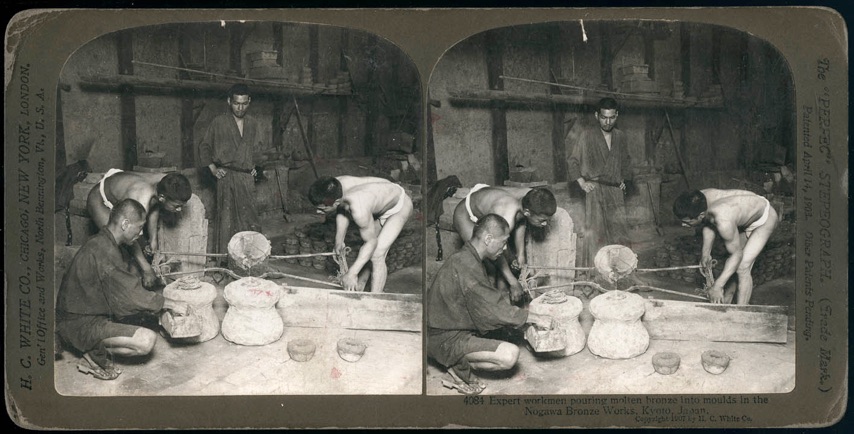
White, H.C., Nogawa Bronze Works, Kyoto, Japan, 1907
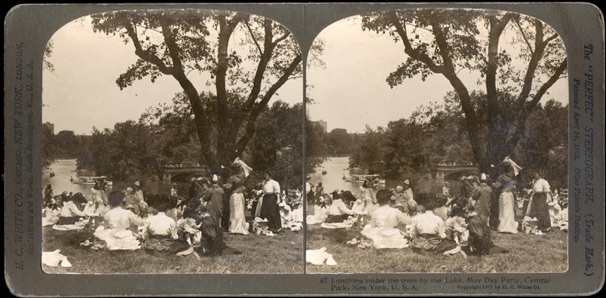
White, H.C., May Day, Central Park, New York, 1907


